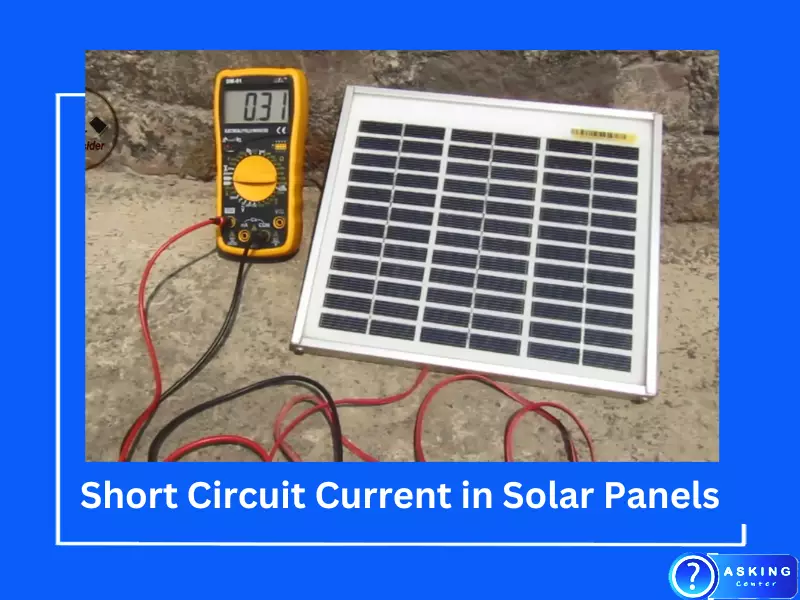Solar panels have revolutionized the way we think about energy, empowering us to harvest the immense power of the sun. They convert sunlight into electricity that can be used to power our homes, businesses, and even our cars. Yet, as with any electrical equipment, they come with their fair share of complexities.
One crucial factor affecting the performance and safety of solar panels is the occurrence of a short circuit current. Simply put, short circuit current refers to the maximum current that a solar panel can provide under short circuit conditions, i.e., when there’s little to no resistance.
As the discussion unfolds, you will navigate through the sea of information relating to short circuit current, its effects on your solar panels, and its relevance to fire safety. Prepare to delve deep into understanding solar panels in a way you haven’t before.
Short Circuit Current in Solar Panels
The term “short circuit current” might sound ominous, and it can be if not adequately managed. In solar panels, it refers to the maximum electrical current that can flow through the panel when the voltage is zero – in essence, when there’s a short circuit.

Why Is Short Circuit Current Important?
To ensure your solar panels operate effectively and safely, understanding and monitoring the short circuit current is essential. It helps in calculating the panel’s power rating and contributes to assessing the system’s overall safety. Too high a short circuit current can pose risks, including damage to the solar panels or even a potential fire hazard.
What Can Damage a Solar Panel?
While short circuit current can potentially harm a solar panel, it’s not the only risk factor.
Impact of Short Circuit Current
When the short circuit current is higher than the panel’s rated capacity, it can lead to overheating. Over time, this can degrade the panel’s performance and even lead to irreversible damage.
Environmental Factors
Solar panels can also be damaged by environmental factors such as hail, strong winds, and excessive heat. These can cause physical damage or deteriorate the panel’s efficiency.
Improper Handling and Installation
Incorrect handling or installation can cause mechanical stress, leading to micro-cracks or faults that impair the panel’s performance.
Aging and Wear and Tear
Like all equipment, solar panels are subject to aging and wear and tear, which can slowly decrease their effectiveness over time.
Testing a Solar Panel System
Ensuring your solar panel system is functioning correctly is a critical step in maintaining its longevity and efficiency.
Why Test Your Solar Panel System?
Regular testing can help identify potential issues early, allowing for timely intervention and preventing further damage or reduced efficiency.
Testing Procedures
- Checking for Physical Damage: Begin with a visual inspection for signs of wear, cracks, or discoloration.
- Measuring Output Voltage and Current: Use a multimeter to check the output. The reading should match the manufacturer’s specifications.
- Advanced Testing – Short Circuit Current Test: This test requires professional equipment and knowledge. It measures the short circuit current, which should fall within the panel’s rating.

When is a Solar Panel a Fire Hazard?
Solar panels, if improperly managed, can pose a fire risk.
The Short Circuit Current Connection
A high short circuit current can lead to overheating, which if left unmanaged, can potentially start a fire.
Other Potential Fire Risks
- Improper Installation: Poorly installed panels or wiring can increase fire risk.
- Poor Maintenance: Not regularly cleaning and inspecting your solar panels can lead to issues going unnoticed and escalating.
How to Calculate How Much Solar Power You Need
To maximize the benefits of solar power, it’s vital to understand your energy needs.
Considerations in Calculating Solar Power Needs
- Energy Consumption: Start by determining your average daily energy usage.
- Hours of Sunlight: The amount of sunlight your area receives will impact the size and number of solar panels needed.
- Efficiency of Solar Panels: Higher efficiency panels can generate more electricity in less space.
Calculating Solar Power Needs
Determine your daily kWh consumption, consider the average hours of sunlight, and factor in the panel’s efficiency to calculate the number of panels you need.
Mitigating Risks Associated with Short Circuit Current in Solar Panels
With understanding and appropriate measures, the risks associated with short circuit current can be managed effectively.
Regular Maintenance and Inspection
Regularly check your panels for any signs of damage and measure output to ensure they are operating within specifications.
Appropriate Installation Practices
Ensure your solar panels are installed by certified professionals following all safety guidelines.
Using Protective Devices
Using devices like circuit breakers or fuses can help manage short circuit current and prevent potential damage.
Conclusion
With an informed understanding of short circuit current and a proactive approach, you can safely harness the power of the sun. Solar panels are an excellent investment, and taking the time to comprehend the intricacies will pay dividends in their efficiency and longevity. So, here’s to bright, sunny days ahead, and to solar panels functioning at their peak.
